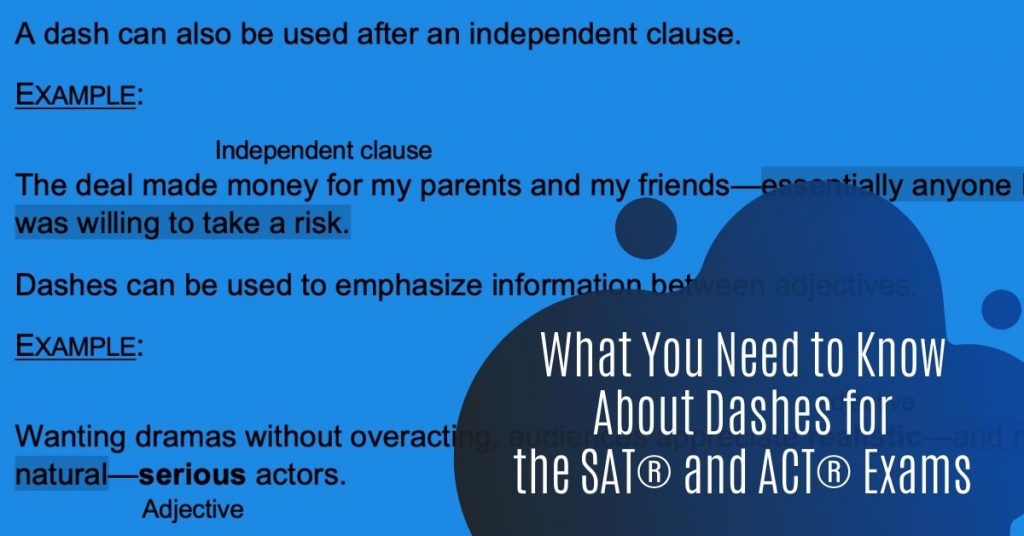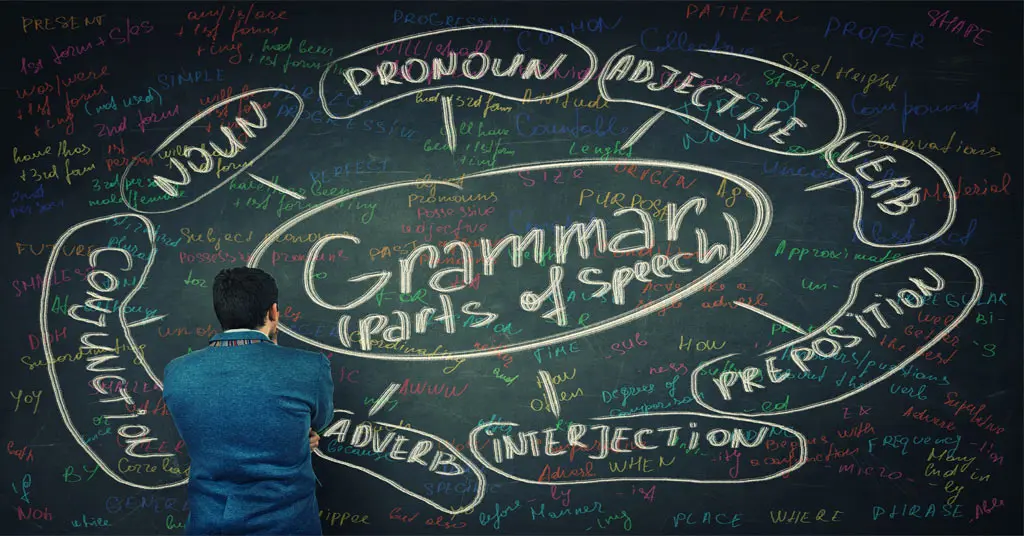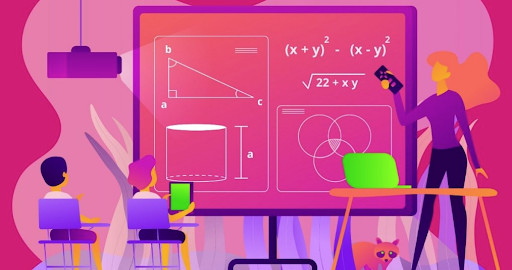Both the SAT® and ACT® exams test students on when dashes should be used. Dashes draw attention to specific content and can function the same way as parentheses. They can set off additional information to further explain what is being discussed but that’s not essential for the sentence to make sense. Dashes can also be used to showcase nonessential information that interrupts a noun and its corresponding verb.

Hint: Often, you are asked whether to use a dash when another dash is already included in the sentence. A second dash should go on the other side of nonessential information and has been correct on all the tests released so far. Remember, dashes work in pairs when the nonessential information is placed in the middle of the sentence.
But dashes can be used with any part of speech and can be phrases or clauses.
- A dash can also be used after an independent clause.

- Dashes can be used to emphasize information between adjectives.

- Dashes can follow the object of a preposition.

- Dashes can be used to indicate a list.

These are just a few of the ways in which dashes appear on the SAT and ACT exams. To become more familiar with when dashes should be used on these tests, practice the same types of punctuation questions you will see on test day. Use released exams provided by the College Board and ACT or practice online with exam-like questions at websites like UWorld.




